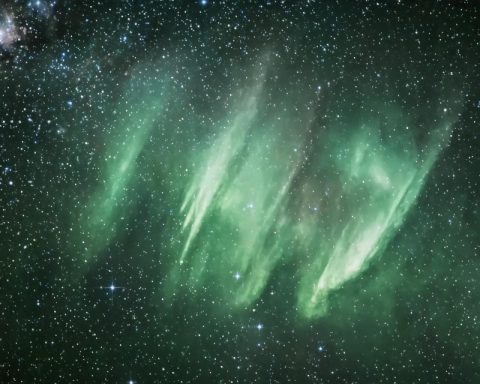Unveiling the Mysteries of Mercury
A recent mission has returned breathtaking images from Mercury’s north pole, revealing stunning details of the planet’s unique landscape. The joint European and Japanese mission, known as BepiColombo, made an impressive close pass, flying just 183 miles (295 kilometers) above the surface, and capturing striking photos that showcase permanently shadowed craters atop this terrestrial world.
The European Space Agency shared the remarkable images, highlighting not only the craters but also adjacent volcanic plains and the vast size of Mercury’s largest impact crater, measuring over 930 miles (1,500 kilometers) in diameter. This detailed view offers a rare glimpse into the features that characterize the smallest planet in our solar system.
Marking its sixth and final flyby of Mercury since its launch in 2018, this maneuver is critical for positioning BepiColombo into orbit around the planet, expected late next year. The spacecraft carries two separate orbiters—one for each agency—set to study Mercury’s poles from above.
BepiColombo is named in honor of Giuseppe “Bepi” Colombo, a renowned Italian mathematician whose contributions were integral to past Mercury exploration efforts. This mission promises to unlock further secrets of this intriguing planet as it prepares for its orbital phase.
Discovering the Secrets of Mercury: The BepiColombo Mission’s Groundbreaking Discoveries
Introduction to Mercury Exploration
The BepiColombo mission, a collaboration between the European Space Agency (ESA) and the Japan Aerospace Exploration Agency (JAXA), is making headlines with its recent groundbreaking insights into Mercury, the smallest and least explored planet in our solar system. This innovative mission is not only capturing stunning images but is also set to revolutionize our understanding of Mercury’s geological and atmospheric features.
What Makes BepiColombo Unique?
One of the standout features of the BepiColombo mission is its ingenious design, which includes two orbiters: the Mercury Planetary Orbiter (MPO) and the Mercury Magnetospheric Orbiter (MMO). These two sophisticated instruments are tasked with various scientific objectives:
– MPO is equipped to study Mercury’s surface composition, geology, and exosphere, providing detailed maps of the terrain.
– MMO focuses on the planet’s magnetosphere, seeking to understand its magnetic field and how it interacts with solar wind.
How BepiColombo is Enhancing Our Knowledge about Mercury
1. Permanently Shadowed Areas: The recent images reveal permanently shadowed craters near the north pole, which are key locations for detecting water ice and other volatiles.
2. Volcanic Activity: The mission has documented extensive volcanic plains that hint at Mercury’s geologic history, suggesting the planet was geologically active in the past.
3. Impact Craters: The largest impact crater, over 930 miles (1,500 kilometers) wide, underscores the violent history of this planet, providing a valuable perspective for comparative planetology studies.
Specifications of BepiColombo
– Launch Date: October 20, 2018
– Mission Duration: Expected to last several years, with science operations commencing once in orbit.
– Flight Path: Utilizes gravity assists from Earth, Venus, and Mercury itself to enter the planet’s orbit.
Advantages and Limitations
Pros:
– The dual-orbiter setup allows for comprehensive coverage of Mercury, providing insight into both its surface and magnetic environment.
– Unprecedented close-up imaging reveals features that had previously been unseen.
Cons:
– BepiColombo’s journey to Mercury involves several flybys and a lengthy travel time of almost 7 years before entering orbit.
– The extreme temperatures and conditions near Mercury pose significant challenges for instrument functionality.
Future Prospects and Predictions
The BepiColombo mission’s data is anticipated to lead to significant advancements in our understanding of planetary science. As it gathers more information, we can expect:
– Predictions regarding Mercury’s geological processes and its potential for hosting water ice.
– Insights into the formation of terrestrial planets and their evolution over time.
Understanding Mercury’s Impact on Astronomy
Mercury’s unique characteristics make it an intriguing subject for astronomers. BepiColombo aims to provide valuable data that can inform future space exploration missions and contribute to our knowledge of planetary systems.
For more exciting updates on space exploration and planetary science, check out ESA for the latest news and research breakthroughs.
By delving into the mysteries of Mercury, the BepiColombo mission is set to change the landscape of planetary science, opening new avenues for exploration in our solar system and beyond.



















